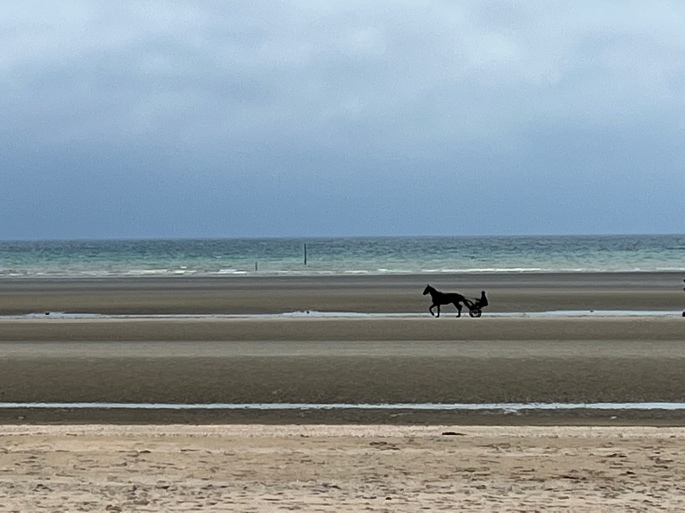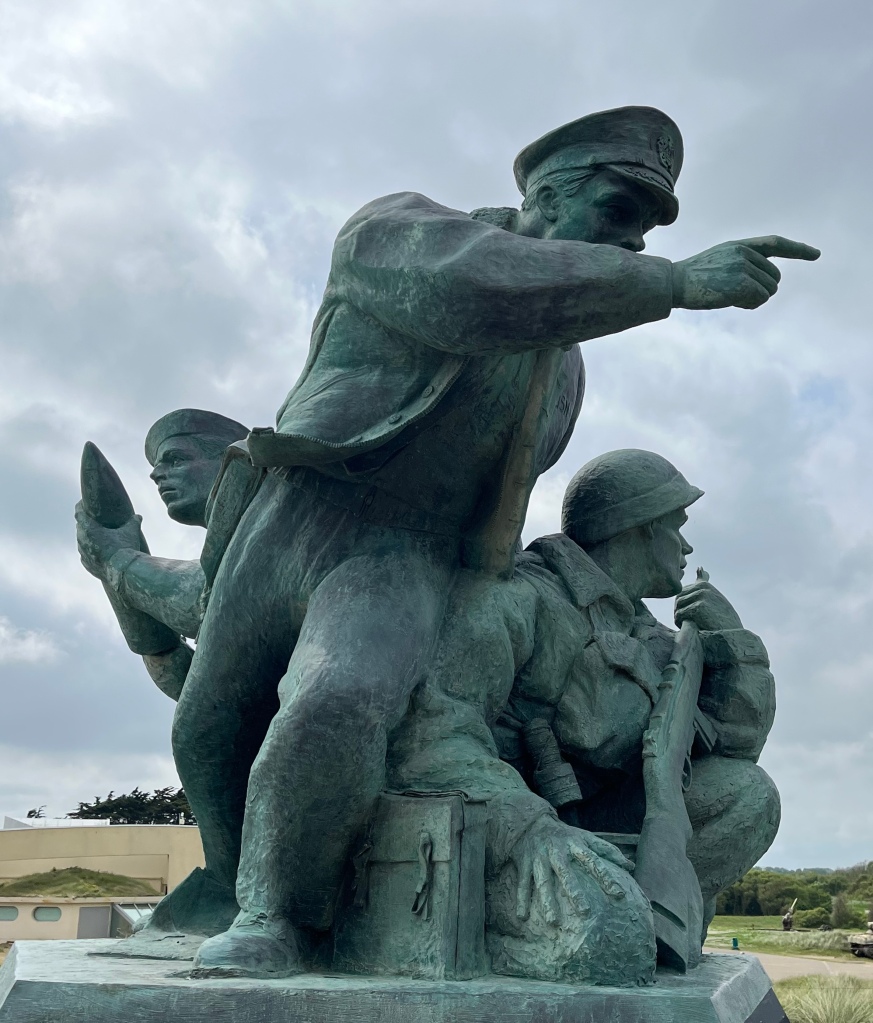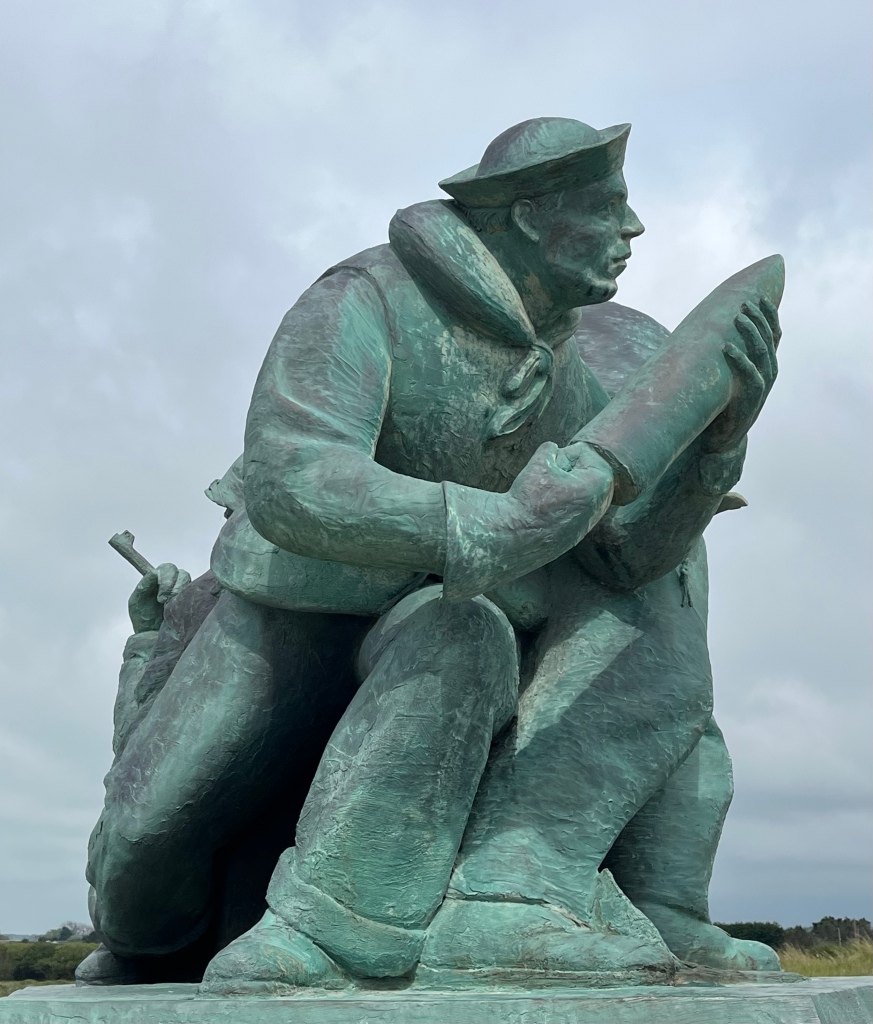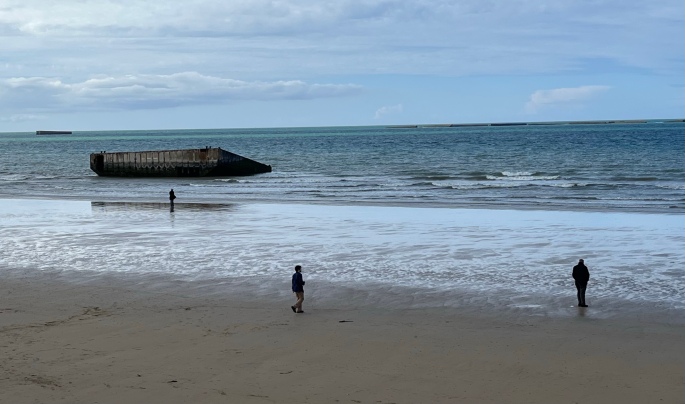A number off years ago when we visited Northern France, we stopped at four of the five landing beaches. It was all totally unplanned but regardless it left me wanting to finish the quest. This time we did finish. Here’s a shot of the landing spots.

Utah Beach
The westernmost of the five code-named landing beaches in Normandy, undertaken by the United States. Forces landing on Utah cleared the immediate area in less than an hour and penetrated 6 miles inland by the close of D-Day.

This was something I didn’t expect to see…………..

We came upon this monument and inside the fortification we found this.


Interesting enough, we also came across this plaque in the same area. It was one of a series of large-scale rehearsals for the D-Day invasion. Because of the impending invasion of Normandy, the incident was under the strictest secrecy at the time and only minimally reported afterwards.

Another monument was part of this space, having three figures:
~the officer is standing and represents leadership and planning & intelligence for the operation.
~The sailor on his knees represents the naval combat demolition units and those sailors who fought ashore with very high causalities.
~The third sailor is loading a gun for the shore bombardment.



Omaha Beach
The primary U.S. objective was to secure a beachhead 5 miles deep, linking up with the British landings. Ultimately, the foothold at the end of the day was 1.6 miles. Very little went as planned as difficulties during navigation caused most of the landing craft to miss their targets throughout the day.

Defenses were unexpectedly strong and inflicted substantial casualties on the US troops. Ten landing craft were swamped by rough seas and seasickness was prevalent among the troops waiting offshore.

Causalities were most severe among the troops landing at either end of Omaha. Most companies were at best disorganized, leaderless and pinned down with no hope of carrying out their assault missions. This monument was created to recognize the bravery of the medics as they dodged bullets running to injured soldiers along the beachfront – having no way to protect themselves.

On the bluff was a memorial to the Big Red One infantryman as they encountered beach obstacles and fierce enemy fire which stopped their advance at the water’s edge.

The names on the monument remind us of the heavy cost of that victory. Their motto – ‘No Mission Too Difficult, No Sacrifice Too Great, Duty First’.
Gold Beach
The objective for the British troops were to secure a beachhead, move west to capture Arromanches and establish contact with the American forces, capture Bayeux and the Port-en-Bessin, linking up with the Canadian forces at Juno. Extremely choppy seas, navigation errors, strong current and a quicker incoming tide impacted the operation – which was still not on point as desired. Bayeux was not captured until the following day.

Above, Adrienne is walking to one of the remaining ‘Mulberrys’. Gold Beach was to be one of the Mulberry Harbors that was brought across the Channel on D+1 to facilitate rapid off-loading of cargo onto the beaches after the Allied invasion. The other two figures below are Connor and Eric. An entire post could be dedicated just to the creation, building and execution of the Mulberry harbor.

Both harbors were fully functional when a large NE storm blew in on 6/19/44. The harbors had been designed with summer weather conditions in mind and the storm was the worst to hit Normandy in 40 years. Damage was so heavy on the other one, it was abandoned. Designed to last for only three months, the remaining one saw heavy use for eight months.

Juno Beach
The Canadian objective was to cut the Caen-Bayeux road, seize an airport west of Caen and form a link between the two British beaches on either flank.

Despite the failure to capture any of the final D-Day objectives, the assault was generally considered – alongside Utah – the most strategically successful of the D-Day landings.

While there are disputes concerning reasons why objectives were not met, weather, timing and congestion on the beach are popular theories.

Sword Beach
The easternmost landing site was the responsibility of the British Army. They were to assault the beaches, and seize the historic Norman city of Caen. Strong resistance, heavy fire and congestion on the beach as more men, vehices and equipment arrived complicated matters.

The British and Canadiens were able to link up the following day and continue the drive to Caen. At this site was a sculpture of a bagpiper.


My quest was accomplished during this trip. The beaches were so quiet, peaceful and treated with respect for any others we came across – so different from that day in June 1944.
